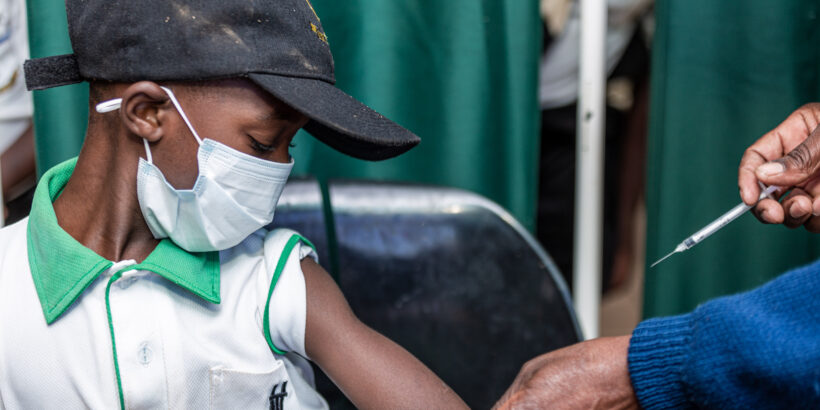As many of us wrap up our work for 2021 and look forward to some time away from the office for rest and time with loved ones, it is a chance to reflect on how our world has changed this year and what 2022 will bring. In a year dominated by COVID-19, we saw vaccines arrive in nearly every country in the world—although much too slowly to Africa, where I live. The race to vaccinate the world against COVID-19 continues as we grapple to stay ahead of variants. Despite all that, 2021 was a remarkable year for typhoid prevention and control.
Progress with TCVs and typhoid research in 2021
I am particularly excited that two African countries introduced TCV into their routine immunization systems this year: Liberia and Zimbabwe. Nearly 6 million children have been reached with TCV in these two countries. In Asia, Pakistan continued its impressive national rollout with two campaigns. Together, these campaigns reached nearly 20 million additional children in Punjab province and Islamabad. These countries showed us that campaigns are doable during the COVID-19 pandemic. With the right planning, precautions, and information sharing, we can reach children with important health tools despite COVID-19 challenges. Samoa also introduced TCV, the first non-Gavi-eligible country to mark such a milestone.
We also solidified the evidence on the impressive efficacy of TCV. The vaccine prevented between 79% and 85% of typhoid cases in Phase 3 studies in Bangladesh, Nepal, and Malawi. These results demonstrate that TCVs are safe and protective across diverse settings in Africa and Asia. We have data that show TCV can be safely co-administered with yellow fever, measles-rubella, and meningococcal A vaccines, an important consideration for integrating TCV into existing routine immunization systems. Data from Pakistan published this year show that TCV also protects against drug-resistant typhoid. This evidence is critically important as drug-resistant typhoid continues to rapidly spread.
Also earlier this year, the WHO prequalified a second TCV. This was an important step to increasing global availability and ensuring countries can access TCV when they need it for introductory campaigns and sustaining supply for routine immunization.
Finally, years of surveillance and research culminated in landmark publications from the Strategic Typhoid Alliance across Africa and Asia (STRATAA), which conducted a prospective typhoid surveillance study in three densely populated urban areas in Bangladesh, Malawi, and Nepal. The study underscores the large and likely undercounted burden of typhoid in all three countries. It also reminds us of the enormous benefits TCVs could bring to countries in South Asia and sub-Saharan Africa.
A year of vaccines and healthcare workers
I would be remiss to look back on 2021 and not reflect on the essential healthcare workers who have administered millions of vaccines this year. These include TCV as well as other vaccines to keep polio, measles, and other vaccine-preventable diseases at bay. As we quickly learned last year, routine childhood immunization could not be paused. Healthcare workers around the globe continue to go to great lengths to protect the health of others. We are grateful for their commitment.
It’s no surprise that Merriam Webster Dictionary chose “vaccine” as the 2021 word of the year. For many, this connects to COVID-19 vaccines, but it is much bigger than that. It is also about maintaining access to routine immunization, including TCV. It is about reaching zero-dose children, ensuring they are protected against potentially fatal childhood diseases. For me, the word “vaccine” represents protection, health, and the proof that, together, scientists and researchers, policymakers and advocates, and donors and implementers each have a vital role to ensure we reach and protect every community with proven health tools. We hope that in 2022, we will register more success in reaching everyone with lifesaving vaccines.



